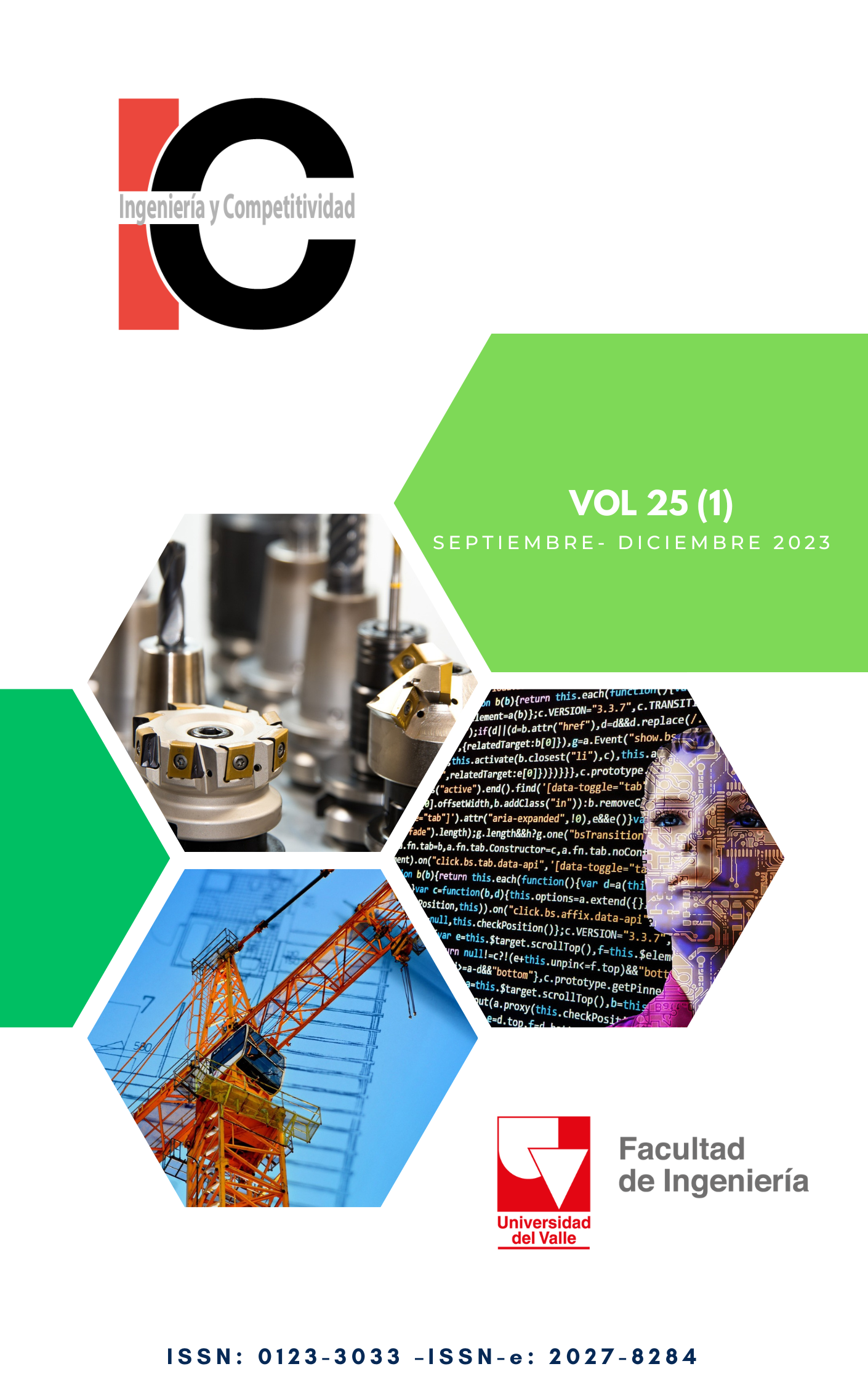Caracterización de delitos cibernéticos del departamento de Cundinamarca durante el primer semestre de 2021 mediante análisis exploratorio y aprendizaje de máquina
Palabras clave:
Análisis Exploratorio, Ciberseguridad, Delito Cibernético, Aprendizaje de máquinaContenido principal del artículo
Teniendo en cuenta la amplia difusión que ha tenido la analítica de datos en diferentes ámbitos de aplicación y considerando la escasez de datasets específicos asociados a los delitos informáticos dentro de las estrategias de datos abiertos en Colombia, este artículo tiene como objetivo realizar la caracterización de los delitos informáticos del departamento de Cundinamarca, mediante el uso de técnicas de análisis exploratorio y machine learning. La presente investigación fue desarrollada mediante 4 fases metodológicas: adecuación de los datos, análisis exploratorio de los datos, aplicación de modelos de machine learning y finalmente generación de información de valor agregado. Para el desarrollo del estudio propuesto, se conformó un conjunto de datos a partir del dataset de 35000 registros publicado por la Policía Nacional en el portal de datos abiertos de Colombia, el cual aborda los delitos de alto impacto dentro del departamento de Cundinamarca y ocurridos durante el primer semestre de 2021. El dataset de delitos cibernéticos conformado cuenta con un total de 1513 registros e incluye atributos tales como: día, trimestre, municipio, zona, víctima, edad y delito, de tal modo que a nivel del análisis exploratorio se aplicaron métodos de estadística descriptiva sobre los diferentes atributos, mientras que a nivel de machine learning se hizo uso de los modelos de reglas de asociación y clustering con el fin de determinar de manera respectiva la relación de los atributos con el tipo de delito, y los grupos representativos que se forman al relacionar la edad con el tipo de delito y el municipio con el tipo de delito. El estudio desarrollado permitió demostrar la utilidad y potencialidad que tienen las técnicas de analítica de datos en el campo de la ciberseguridad, de cara a apoyar la toma de decisiones por parte de las autoridades pertinentes
(1) Nicol DM. The Value of Useless Academic Research to the Cyberdefense of Critical Infrastructures. IEEE Secur Priv. 2020 Jan 1;18(1):4–7. https://doi.org/10.1109/MSEC.2019.2951835.
(2) Beuhring A, Salous K. Beyond blacklisting: Cyberdefense in the era of advanced persistent threats. IEEE Secur Priv. 2014 Sep 1;12(5):90–3. https://doi.org/10.1109/MSP.2014.86.
(3) Ospina Díaz MR, Sanabria Rangel PE. Desafíos nacionales frente a la ciberseguridad en el escenario global: un análisis para Colombia. Rev Crim. 2020;62(2):199–217.
(4) Ojeda Pérez J, Rincón Rodríguez F, Arias Flórez M, Daza Martínez L. Delitos informáticos y entorno jurídico vigente en Colombia. Cuad Contab. 2010;11(28):41–66.
(5) Vargas Borbúa R, Reyes Chicango RP, Recalde Herrera L. Ciberdefensa y ciberseguridad, más allá del mundo virtual: modelo ecuatoriano de gobernanza en ciberdefensa. URVIO - Rev Latinoam Estud Segur. 2017 Jun 29;(20):31–45. https://doi.org/10.17141/urvio.20.2017.2571.
(6) Reyna D, Olivera D. Las amenazas cibernéticas. In: 10 Temas de Ciberseguridad. Universidad de Xalapa; 2017. p. 49–72.
(7) Pereira T, Santos H, Mendes I. Challenges and reflections in designing Cyber security curriculum. EDUNINE 2017. Santos: IEEE World Eng Educ Conf Eng Educ - Balanc Gen Spec Form Technol Carriers A Curr Challenge, Proc. 2017 May 2;47–51. https://doi.org/10.1109/EDUNINE.2017.7918179.
(8) Ortiz-Campos N. Normativa Legal sobre Delitos Informáticos en Ecuador. Rev Científica Hallazgos21. 2019;4(1):100–11. Available from: http://revistas.pucese.edu.ec/hallazgos21/.
(9) Acosta MG, Benavides M, García N. Delitos informáticos: Impunidad organizacional y su complejidad en el mundo de los negocios. Rev Venez Gerenc. 2020;25(89):351–68. Available from: https://www.redalyc.org/articulo.oa?id=29062641023.
(10) Pons V. Internet, la nueva era del delito: ciberdelito, ciberterrorismo, legislación y ciberseguridad. URVIO - Rev Latinoam Estud Segur. 2017;(20):80–93. https://doi.org/10.17141/urvio.20.2017.2563.
(11) Urcuqui C, García M, Osorio JL, Navarro A. Ciberseguridad: Un enfoque desde la ciencia de datos. Universidad Icesi; 2018. p. 91. https://doi.org/10.18046/EUI/ee.4.2018.
(12) Coyac-Torres JE, Sidorov G, Aguirre-Anaya E. Detección de ciberataques a través del análisis de mensajes de redes sociales : revisión del estado del arte. Res Comput Sci. 2020;149(8):1031–41.
(13) Policia Nacional de Colombia. Dataset de delitos de alto impacto para el departamento de Cundinamarca. Available from: https://www.datos.gov.co/dataset/DELITOS-DE-ALTO-IMPACTO-EN-EL-DEPARTAMENTO-DE-CUND/7b35-j7bt/data.
(14) Nafie Ali FM, Mohamed Hamed AA. Usage Apriori and clustering algorithms in WEKA tools to mining dataset of traffic accidents. J Inf Telecommun. 2018;2(3):231–45. https://doi.org/10.1080/24751839.2018.1448205.
(15) Do Carmo Silva M, Simoes Gomes CF, Alves Lima GB. Utilities Analysis for Latin America and Caribbean Innovation Indicators. IEEE Lat Am Trans. 2018 Nov 1;16(11):2834–40. https://doi.org/10.1109/TLA.2018.8795126.
(16) Montoya EAQ, Colorado SFJ, Muñoz WYC, Chanchí G. Propuesta de una Arquitectura para Agricultura de Precisión Soportada en IoT. RISTI - Rev Iber Sist e Tecnol Inf [Internet]. 2017 [cited 2020 Aug 1];(24):39–56. Available from: http://www.scielo.mec.pt/scielo.php?pid=S1646-98952017000400005&script=sci_arttext&tlng=es.
(17) Anselin L, Syabri I, Kho Y. GeoDa: an introduction to spatial data analysis. In: Handbook of applied spatial analysis. Springer; 2010. p. 73–89.
(18) Wu Z, Zhang F, Di D, Wang H. Study of spatial distribution characteristics of river eco-environmental values based on emergy-GeoDa method. Sci Total Environ. 2022;802:149679. https://doi.org/10.1016/j.scitotenv.2021.149679.
(19) Yang S, Ge M, Li X, Pan C. The spatial distribution of the normal reference values of the activated partial thromboplastin time based on ArcGIS and GeoDA. Int J Biometeorol. 2020;64(5):779–90. https://doi.org/10.1007/s00484-020-01868-2.
Downloads

Esta obra está bajo una licencia internacional Creative Commons Atribución-NoComercial-CompartirIgual 4.0.
Los autores que publican en esta revista están de acuerdo con los siguientes términos:
Los autores ceden los derechos patrimoniales a la revista y a la Universidad del Valle sobre los manuscritos aceptados, pero podrán hacer los reusos que consideren pertinentes por motivos profesionales, educativos, académicos o científicos, de acuerdo con los términos de la licencia que otorga la revista a todos sus artículos.
Los artículos serán publicados bajo la licencia Creative Commons 4.0 BY-NC-SA (de atribución, no comercial, sin obras derivadas).

